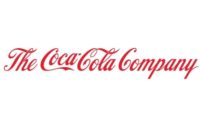Cover Feature
The Coca-Cola Co. launches 100 percent rPET bottle in various brands, markets
Innovation supports company’s World Without Waste initiative that launched in 2018

Mary Anning, the English paleontologist who discovered the first-ever plesiosaur skeleton in 1823, first began fossil hunting as a child with her father and brother. Although during her lifetime Anning was not taken as seriously as other paleontologists because of her gender and socio-economic background, her ambition and dedication has led to her now being viewed as one of the top fossil hunters in history.
Like Anning, innovators today are showing how their ambition and dedication can help make a difference in the world. One of the tangible ways we’re seeing this is through efforts to support a more sustainable environment by creating less waste, recycling content when possible and by using fewer resources. Multinational beverage corporation the Atlanta-based Coca-Cola Co. is showing its dedication to a sustainable future and protecting the planet through its World Without Waste initiative, which launched in 2018.
“It is an ambitious environmental program created in response to the world’s plastic packaging waste issue,” explains Nicole Ray, sustainable packaging program director for The Coca-Cola Co. “However, we have sought to design our packaging in an environmentally responsible way for decades. For example, in 1969 we did our first life-cycle analysis examining the environmental impact of beverage and food packaging, and, in 1991, we debuted the first-ever plastic bottle made with recycled content.”
The Coca-Cola Co.’s World Without Waste initiative signals a renewed focus on the entire packaging lifecycle and is designed around recycling goals for access and materials.
“We set an ambitious global goal to collect and recycle the equivalent of a bottle or can for every one we sell by 2030, to make 100 percent of our packaging recyclable by 2025 and to use 50 percent recycled material in bottles and cans by 2030 ― all part of a robust World Without Waste initiative,” Ray says.
The company’s most recent project is the debut of a 13.2-ounce 100 percent recycled PET (rPET) bottle, which not only supports the packaging initiative but also carbon-emission reduction goals.
“Not only are our 100 percent rPET bottles helping to accelerate progress toward our World Without Waste goals, they also are significantly reducing our carbon emissions and increasing our use of recycled plastic,” Ray explains.
The 100 percent rPET designation remains attached to just the bottle and is not part of the composition of the cap and label, the company notes.
In early February, the beverage manufacturer announced that Coca-Cola trademark brands (Coca-Cola, Diet Coke, Coke Zero Sugar, Coca-Cola flavors) would debut the 100 percent rPET plastic bottle in California, Florida and select states in the Northeast in February, with a national launch this summer including other sparkling beverage brands.
The 13.2-ounce bottle was chosen for its support of consumer convenience as well as its ability to be handled across current bottling systems.
“In an effort to make sustainable innovations accessible to all, we introduced the 100 percent rPET package in the new Coca-Cola 13.2-ounce bottle, the perfect portion size for those on-the-go,” Ray says.
She adds that “no new equipment is needed to manufacture the 13.2-ounce bottle.”
Lessons in progress
The origins of the 100 percent rPET bottle began through discussion in April 2020, Ray notes. As the company began to make progress in advancing the project, however, she adds that the 100 percent rPET bottle taught the company some important lessons.
“While we learned a lot during this process, two lessons stand out,” she notes. “When working with 100 percent recycled PET for carbonated beverages, the quality of the rPET grade is crucial. As the material (rPET) has already undergone multiple heat histories and processing, it is more brittle than virgin PET.
“Therefore, when adding the internal pressure from a carbonated beverage, you can see an increase in damaged, unusable bottles if the material is not made to a specific grade,” Ray continues. “Second, the quality of rPET depends largely on the quality of feedstock the rPET suppliers are sourcing. If our recycling streams are not running efficiently and are not properly sorted, this can degrade the quality of the rPET.”
In addition to these key lessons, the team working on the project had a number of benchmarks for the bottle’s design and performance that it needed to meet, she says.
“There were many benchmarks from a technical packaging performance perspective,” she notes. “A few of the top priorities included ensuring carbonation, product integrity, safety and quality of the rPET resin, and compatibility. Finally, it was key that the new 100 percent rPET bottle was compatible with our existing production lines with minimal impact to current processing standards.”
Phased for success
With benchmarks met, The Coca-Cola Co. took its next steps to get the 100 percent rPET bottles into the beverage market. As noted earlier, California, Florida and select states in the Northeast were selected as the first test locations for the new bottle type.
“In an effort to get the 100 percent rPET bottles to market as quickly as possible, we are taking a phased approach, starting with some of our largest markets, followed by a nationwide expansion this summer,” Ray explains. “As a franchised bottling system, we have the opportunity to test initiatives with select bottlers on a local scale before expanding to all facilities. We are working hard to tackle the world’s packaging waste problem, and we recognize the urgency of this issue.”
As Ray notes, this summer will see 100 percent rPET bottle expand nationwide, but as things currently stand, there is not enough recycled content to meet the increased demand. To address this issue, The Coca-Cola Co. is using its labeling and capital expenditures to help advance recycling rates and ultimately the amount of recycled content available.
“We need more PET bottles recycled so that we can turn them into rPET,” Ray explains. “Our approaches to solving this problem include encouraging consumers to recycle our bottles via ‘Recycle Me’ and ‘Recycle Me Again’ messages on our labels and increasing support for local recycling programs.”
Highlighting how the company’s packaging serves as its brands’ biggest billboards, Ray says that it serves as a strong communicator to consumers with the Recycle Me Again verbiage.
“It is imperative to us that we use the power of our brands, leading with Coca-Cola, to educate, inspire and advance our sustainability priorities,” she says. “Four different areas on the 100 percent rPET packaging educate consumers about recycling. The goal is for consumers to recycle these recyclable bottles so that they can be used again and again as raw material for more new bottles, which supports closed-loop recycling systems and circular economies for PET.”
Yet, the 100 percent rPET bottle is not the only big packaging news coming from The Coca-Cola Co. The company also announced that Sprite launched a 13.2-ounce 100 percent rPET clear bottle in the same locations as the Coca-Cola trademark. Additionally, all Sprite packaging will transition to clear packaging by the end of 2022.
The company also noted packaging changes for its bottled waters. For instance, DASANI bottled water launched in 20-ounce 100 percent rPET bottles in New York, California and Texas in March, while smartwater will launch in 20-ounce 100 percent rPET bottles in New York and California in July.
“Launching Sprite 13.2-ounce in clear bottles, as well as transitioning our other Sprite packaging to clear by 2022, makes it easier for the bottles to be recycled and remade into new bottles,” Ray says. “Additionally, using recycled PET reduces energy and greenhouse gas emissions. The process of making a PET bottle with recycled PET material requires less energy and emits fewer greenhouse gases than making a bottle using virgin petroleum-based sources. These innovations will collectively reduce 10,000 metric tons of greenhouse gas emissions annually in the U.S. ― equivalent to taking 2,120 cars off of the road for one year, based on internal company tools.
“Combined, these innovations will increase our amount of rPET use to 15-20 percent this year in the U.S.,” she continues. “Using rPET instead of virgin PET helps create and sustain a circular economy for PET bottles through recycling and reusing efforts. This circular economy is critical to ensuring that plastic waste stays out of the environment and is instead continuously recycled and reused.”
Community effort
Although The Coca-Cola Co. is making strides within its business operations to support a more sustainable future, the beverage manufacturer also is taking its World Without Waste goals to a broader community to ensure more education and recycling access.
“Our company has invested more than $17 million in the United States to support recycling infrastructure, recycling access to households and recycling education in thousands of communities in partnership with NGOs, the government and industry entities,” Ray explains. “Through the non-alcoholic beverage industry association, American Beverage, we’ve invested in a $100 million fund to support community recycling programs across the U.S.”
Through the company’s participation in the breakthrough Every Bottle Back, American Beverage’s initiative to reduce the industry’s use of new plastic, the companies are making significant investments and working together to improve the collection of the industry’s valuable plastic bottles with a circular goal in mind: the production of new bottles.
“This commitment includes launching a public awareness campaign through community outreach and partner engagement to help consumers understand the value of 100 percent recyclable bottles and the importance of getting these bottles back,” Ray says. “Through this initiative, we’ve collaborated with The Recycling Partnership and Closed Loop Partners to improve recycling access, provide education to consumers and modernize the recycling infrastructure in communities across the country.”
These efforts, combined with the proliferation of the 100 percent rPET bottle in more markets and company-owned branding, is propelling The Coca-Cola Co. ever closer to its goal of a World Without Waste.
“With the launch of the 100 percent rPET bottle in the U.S., The Coca-Cola Co. now offers 100 percent rPET bottles in more than 25 markets around the world, bringing us closer to our World Without Waste goal of making bottles and cans with 50 percent recycled content by 2030,” Ray says. “We are also striving to collect and recycle the equivalent of a bottle or can for every one we sell by 2030 and to make 100 percent of our packaging recyclable by 2025. When it comes to our collection goal, we’re making strides to improve recycling across the U.S. through collaborative initiatives like Every Bottle Back, which in 2020 led to significant investments in recycling infrastructure.
“For example, the initiative invested $3 million in the Dallas-Fort Worth Metroplex to upgrade the recycling infrastructure and boost collection rates ― expected to yield 30 million pounds of newly recovered, recyclable PET plastic over 10 years,” she concludes. “We’re also actively working to achieve our goal of making 100 percent of our packaging recyclable by 2025. Today, 94 percent of our packaging in the U.S. is recyclable.”
Looking for a reprint of this article?
From high-res PDFs to custom plaques, order your copy today!






